Sound Impression Continued
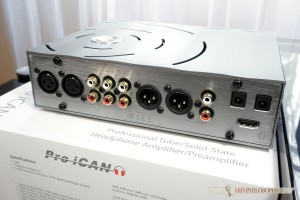
The rear panel is also well equipped, and to the right side hides a real curiosity – ESL output, which in the future will support electrostatic module!
Now let’s delve into the world of headphones, listing each by the name. I’ve used both Audeze, preceded by NighHawk, and then HE-6. It was good play, on high level, still having in mind how the NightHawk sounded with Sigma. But I must say that both headphones from Audeze, paired with Hegel, dominated over the rest.
Here I would like to add a personal remark. At times, my tolerance may differ. It would seem tolerance is valuable and appreciated, so it is a good thing to have it, but my tolerance is fluctuating and inconstant by nature. It gives me some trouble, because in the life of an audiophile it proves very useful and in the life of a reviewer – my good God – it is indispensable. Because with high tolerance one is pleased with everything and accepts everything. Therefore they would praise every equipment and listen to it with pleasure, arguing with those who dare to criticize anything. Such behavior is ostracism on equipment and has to be stomped out.
OK, I know I’m just fooling around and will be accused of picking on somebody. Nevertheless, I’ve noticed fluctuating tolerance in myself. It depends on the mood or the weather perhaps, but sometimes I’m more forgiving to poor quality stuff and at times I am a tyrant. This was the case when I was listening to both Audeze using Hegel and this big ifi. I was comparing using You Tube files, constantly switching between the two Audeze, because they were very similar and different at the same time, so I had to analyze them carefully. Arriving finally into some conclusions, I picked NighHawk again and then HiFiMAN.
The life of an audiophile can be full of surprises. Not long ago I saw that HE-6 and NightHawk compared to Audeze were pretty good. And now I felt like someone hit me in the head. A huge difference occured – and not for the first time – I’ve already mentioned that in LCD-4 review, when talking about Sigma, that other headphones cannot match with Audeze. These headphones, just like the older LCD-3, have such a character that they can highlight some differences at the computer, which was the case with Hegel. The difference is, however, that the older LCD-3 are more poetic and musical, whereas the new LCD-4 more firm and correct. I was listening to both with satisfaction and full attention, but I wasn’t aware that they were so much better. Only in comparison I realized how much more beautiful they sounded and how much realistic they were. The difference was huge, which I admit without satisfaction. But paired with Hegel, I wanted to listen only to them, sadly, the rest dropped out and I just couldn’t help it. After all, reviews are not to praise things but to describe one’s impressions – and here it was like I said, my tolerance was close to zero. I was surprised myself, because I like NightHawk and value HE-6 highly, but with PRO iCAN, both Sigma and Hegel converters showed the power of music hidden in Audeze. You might conclude that what the amp needs it for, is to let Audeze make the best of it. The tube Twin-Head doesn’t need it, but to the reviewed ifi it is very important. To put it differently, you could say ifi PRO iCAN is particularly good at objectively showing headphones’ abilities and hence the differences. It doesn’t add much of its own, but it brings out what’s already there, resulting in diversity and lack of tolerance. Of course, it doesn’t mean it can only play with Audeze and perhaps few others. It means that it highlights the differences and it is well audible. Especially when it comes to poor quality files, which couldn’t be improved even by the musical Hegel. It indicates the potential, which is so rarely visible in an amp. Let me just remind you how good it played with Sigma and HD 600, however, still having something in stock for Audeze.
With SACD player
Now lets move on to the player as it’s the most musical. With a converter worth 40k, with 12 chips. Its style of presentation is very close to Hegel, so there’s not much to say about differences, although they were definitely present. Supported with a dedicated, advanced drive, not the Blue-ray from Asus that was on the computer, it filled the sounds better and didn’t create the atmosphere of somewhat fake excitement. From the beginning, it offered better order and better surface feeling. After a few moments, as the amps warmed up, the sound has become richer than that on the computer, it was still more orderly, in a better organized space. The sound was also a bit more sweet and warm, whereas the brightness, texture feeling and overall atmosphere were almost identical. Identical and remarkably accurate, so the listening was most enjoyable. Poorer quality songs also showed that it was more musical when it comes to melody and harmonic flow, which even intensified the enjoyment.
I said amps, because according to my practice, I used two connected in parallel. I plugged ifi in with XLR cables from Tonalium, it had already warmed up at the computer from where I moved it quickly. I also connected Twin-Head with RCA cables from Siltech. Then I simply had to switch the headphones between the two to compare, which was quite easy as Twin-Head also has a 4-pin slot. I compared only with LCD-4, because they can tell the most about the sound, and also not to mess my head with too much data. I also figured I would use only “Tube” mode in ifi, as it is the most universal one, which allowed me to arrive at interesting conclusions.
The subject of this review is ifi PRO iCAN, so I focused my attention on it. What differences and similarities occurred in comparison to the reviewer’s referential tubes? In this matter I can repeat what I’ve said at the beginning. That I’m very pleased, this time in reference to maximalist music, not one from a computer, that such a top quality amp has arrived at the market and with a reasonable price. It costs almost half the price of the headphones that are currently plugged in, and is almost as good as Twin-Head, where the NOS tube set supported with Emission Labs triodes constitutes greater cost in itself.
For a long time it was not so successful premiere
I submerged myself into comparison, switching between dozens of records that are best for comparison. Twin-Head and ifi sounded very similar, which on the one head is a good thing, but on the other hand, there’s a certain irony in that. I was happy that the users can have such a good device for 8k, and I was at the same time angry that my own device worth about 30k is only slightly better. To be honest, before the tubes warmed up (I didn’t have the patience to wait), ifi turned out even better in some aspects. Here, I would like to focus on two key differences. The first is insignificant in the sense of overall quality, because it doesn’t affect it. In Twin-Head, the foreground was closer and the overall stage was greater. In ifi, the foreground was a bit distanced, heard from some perspective. The difference wasn’t big, however, but it was still clearly audible. It also put less emphasis on more distanced sounds, focusing on the close and medium stage. But again, the difference was not that explicit. With similar temperature and almost identical light, the two performances were very alike, with one significant difference. Namely, Twin-Head delivered perfectly clear, solid surface to the sounds. There was a clear barrier, but without being tough or tensed. They simply were there, existed. Human voice constituted a sphere, where you could examine its surface. It was beautifully shaped, perfectly reflecting the individuality of sounds and being invulnerable to overlap. You could say the voices were in solid state, very tangible and concrete. This resulted in complete personalization and real-life experience, where you don’t encounter transparent people. Whereas with ifi, the voices were more liquid-like, as if made of translucent liquid which you could see through. It was effective, although not necessarily realistic. What’s more, depending on the record and a particular voice, at times I liked more Twin-Head’s style and sometimes the one from iCAN. Surprisingly – on the same record Figaros Hochzeit (DG 423 874-2), the baritone of Dietricha Fischer-Dieskau was better with iCAN, whereas the wonderful soprano of Maria Stader sounded worse. But despite of this one prominent difference, I’ve noticed with great satisfaction how much beauty, individualism and good reverb iCAN is able to offer. The difference was quite considerable in comparison to a few days earlier, which means that it takes about a month to fully warm it up, no chance you can speed up the process. Tubes are tubes, and as a rule, you have to let the equipment play. But the final effect went beyond my expectations. Sure, my expectations regarding ifi PRO were high – after all the manufacturer has some accomplishments – but I haven’t expected that much. After an hour or so, Twin-Head started to show what it’s got. Then the curiosity and enjoyment increased, whereas the liquid transparency of voices in ifi started to be annoying. At first it was a pleasant differentiation, able to upstage the simplicity of Twin-Head, but when the latter has reached its full potential, it became less interesting, and kind of unrealistic.
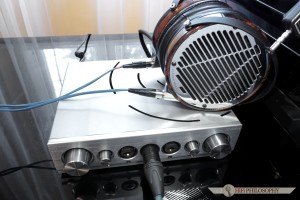
Essentially there is no question of any weaknesses – the whole sound is combined in a sophisticated cohesion.
Then I decided to do something that at first I haven’t planned. I switched into “Tube+” mode and then – I’m delighted to say – the voices in ifi also gained solidness and personalization. Therefore, with top quality sources and top quality cables, “Tube+” mode turns out to be the best. Whereas in less preferable conditions, it can be too tough and less open to sopranos, also not as smooth and kind of gloomy, as it has a dark color. All in all, it’s a good thing that ifi offers three modes, even the transistor mode seems to be just right with poorer quality headphones, and in general, it represents a very good standard. Whereas the two tube modes have the ability to adjust themselves to the equipment, each in its own way, which works to improve the overall compatibility.
At the end, I would like to say something about the utmost quality sound, because it’s something ifi with its music has motivated me to do. The way I see it, when you enter the orbit of excellent audio quality, you know you are there because you no longer feel the bad things, just like in space you don’t feel gravity. The things that pull you down and won’t let you jump. On audiophile orbit, there are no bad things holding you, and without them, you can fully devote yourself to listening. And then three things become important, constituting a quality mark in the audiophile universe. The first is the beauty, related to reverb. Because it is the right reverb and ability to rightly displace sounds on the dynamic waves that delivers the feeling of beauty, which is the most important. The second thing is giving the voices and sounds a familiar tone. I guess it is the simplest thing, and you are able to feel it right away. After all, everyone is able to recognize their friends’ voices on the phone or tell which audio equipment sounds the best. As long as you fully focus on that, it shouldn’t be problematic. And finally the third thing: the overall musical life. Not the basic sound, but the way it exists. They way the space is brought to life, the sources radiate and the virtual particles detach from the surface. The topological depth of textures, the background buzz and the buzz of the flow. The top quality performance must have it, it cannot just materialize and go on unchangingly. It has to constitute a visible flow, not just a picture. Not a collection of slides creating a musical action, but rather a foamy stream and gentle wind around you. Of course, it must be differentiated in volume depending on the moment, but even the silence cannot be dead. It still has to revive the space, because it is also the case in nature. The world we live in doesn’t allow completely empty and dead space. Even vacuum has some energy and void has a virtual creation, so the top quality equipment has to be able to reflect it. And again,
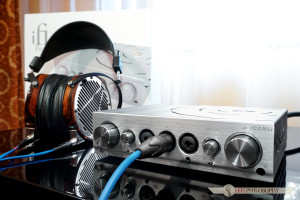
The cost of the latest iFi work isnt modest, but given its quality, we can talk about big affordability. Editorial recommendation!
I’m very pleased to say that all these things are present in ifi PRO iCAN. It didn’t sound dead even in silent moments, and the life of sounds was rich, buzzing and flowing. So those who buy it will enter the orbit where there is no bad gravity. Where you can experience pure magic of existence, in this case reflected in realistic sound and the intrinsic joy of listening to it.









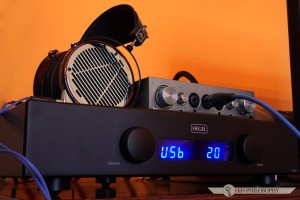
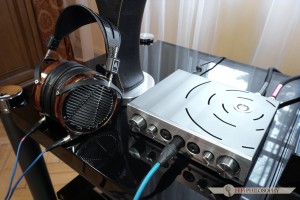
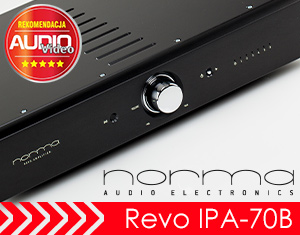
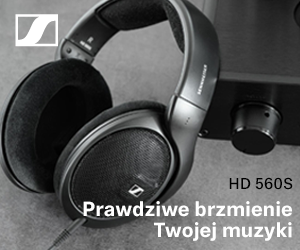

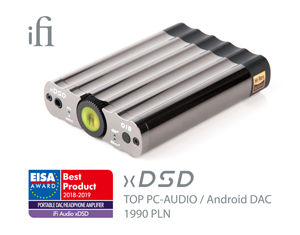


A w polish version też będzie ? 🙂
W polskiej już jest od jakiegoś czasu 🙂
http://hifiphilosophy.com/recenzja-ifi-pro-ican/
Dzięki ,chyba muszę częściej wchodzić na tę stronę bo nie ogarniam wszystkiego 🙂
Zapraszamy. Drzwi zawsze stoją otworem…